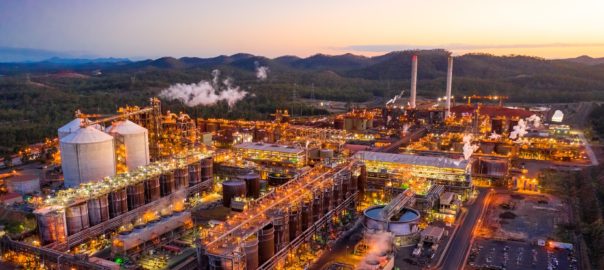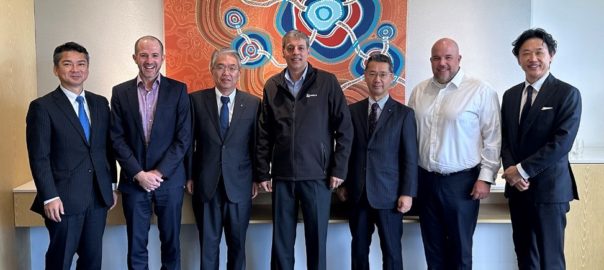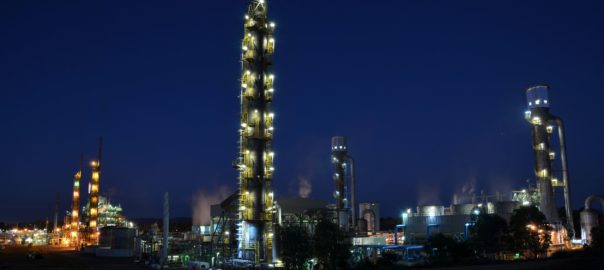Rio Tinto says it has signed Australia’s largest renewable power purchase agreement (PPA) to date to supply its Gladstone operations in Queensland, agreeing to buy the majority of electricity from Windlab’s planned 1.4 GW Bungaban wind energy project.
The agreement, which follows the announcement last month of a PPA for the Upper Calliope solar farm in Queensland, will make Rio Tinto the biggest industrial buyer of renewable power in Australia and is another major step in the work to repower the company’s Gladstone production assets – Boyne aluminium smelter, Yarwun alumina refinery and Queensland Alumina refinery.
Under the new PPA with Windlab, Rio Tinto will buy 80% of all power generated from the Bungaban wind energy project over 25 years. The project, which is currently in early development, will be built and operated by Windlab at a site in Queensland about 40 km from the town of Wandoan, and 290 km southwest of Gladstone, subject to development and grid connection approvals.
The remaining 20% of the project’s generated electricity will supply Australia’s National Electricity Market, delivering clean electricity to homes and businesses.
The PPA is the second renewable power deal signed for Rio Tinto’s Gladstone operations, after the recent agreement signed with European Energy to drive development of the 1.1 GW Upper Calliope solar farm.
Once developed, the combined 2.2 GW of renewable PPAs with Windlab and European Energy have the potential to lower carbon emissions by about 5 Mt/y and could generate the equivalent of 10% of Queensland’s current power demand.
The Bungaban PPA will bring more renewable power into one of Australia’s most important industrial hubs and marks another step towards Rio Tinto’s climate goal of halving its global Scope 1 & 2 carbon emissions this decade. If combined with more renewable power and suitable firming, transmission, and industrial policy, the Bungaban and Upper Calliope PPAs could also provide the core of a solution to repower Rio Tinto’s three Gladstone production assets.
Rio Tinto Chief Executive, Jakob Stausholm, said: “This agreement with Windlab builds on our momentum in our work to repower our Gladstone operations and provide a sustainable future for heavy industry in Central Queensland.
“The task remains challenging, but we have a pathway to provide the competitive, firmed power our Gladstone plants need and we are continuing to work hard with all stakeholders, including the Queensland and Australian governments, on getting there.
“Competitive capacity, firming, and transmission, are critical to developing a modern energy system that can ensure more large-scale renewables development in Queensland and help guarantee the future of Australian industry.”
Once approved, construction of the Bungaban project is targeted to start in late 2025 and is expected to produce electricity by 2029, employ up to 600 people during construction and support up to 30 permanent jobs when operating.
Windlab CEO, John Martin, said: “Securing this PPA is a major milestone for the Bungaban project and a strong signal of the project’s value from the market.
“Windlab is very proud to be partnering with Rio Tinto to support the long-term sustainable future of Rio Tinto’s Gladstone operations.
“This agreement highlights the importance of large-scale renewable energy projects in shoring up Queensland’s powerhouse traditional industries, particularly minerals and advanced processing, which employ thousands of people in regional communities across the state and have a key role to play in our nation’s low-carbon future.
“Bungaban is a key transition opportunity that will create up to 600 new Queensland construction jobs and inject around $500 million into the regional economy through local employment, supply and contracting.
“The project can be responsibly developed, grid connected and producing enough energy to power the equivalent of 740,000 Queensland homes by 2029, while eliminating about 4 Mt of carbon from the state’s generation profile every year.”
Rio Tinto will continue to engage with potential partners to assess other proposals to help competitively meet the energy needs of its three production assets in the Gladstone region. These assets require more than 1 GW of reliable power to operate, which equates to over 4 GW of quality wind or solar power with firming. Potential further electrification of plant processes could increase their electricity demand in the future.











